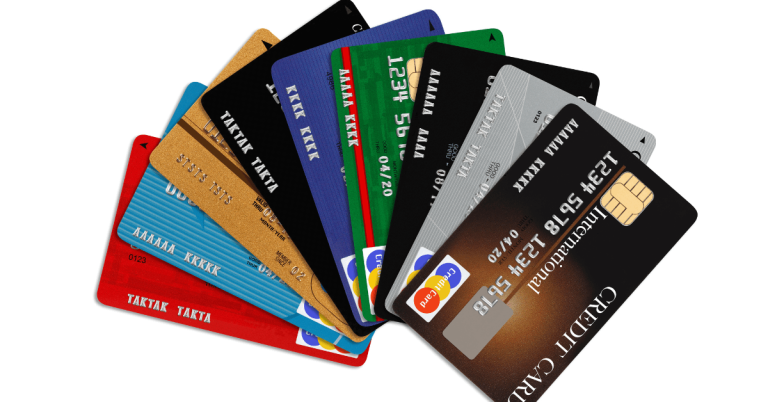Impulse spending is a common financial pitfall that can hinder long-term savings and financial goals.
It can lead to buyer’s remorse, debt, and stress. However, small changes in habits and mindset can help you stop impulse spending and grow your savings.
This article provides practical tips to help you break the cycle and regain control over your finances.
Understanding Impulse Spending
Impulse spending refers to unplanned purchases driven by emotions, external influences, or immediate desires.
Understanding why you buy things on impulse can be a powerful first step toward regaining control over your finances.
- Emotional states like stress, excitement, or boredom usually trigger impulse buying.
- Advertisements and social media can create a sense of urgency, prompting unplanned purchases.
- Many impulse buys stem from a momentary desire for instant gratification.
- Impulse spending often occurs when you have not planned your purchases in advance.

Recognize the Consequences of Impulse Spending
Impulsive purchases can have serious long-term consequences if left unchecked.
Recognizing the impact of your spending can help motivate you to change your behavior.
- In the short term, impulse spending can lead to buyer’s remorse and feelings of guilt.
- Accumulating debt from unplanned purchases can lead to financial stress.
- Impulse buys can prevent you from saving money for bigger life goals, like buying a home or retiring comfortably.
- If not managed, impulse spending can quickly spiral out of control, causing significant financial problems.
Set Clear Financial Goals
Setting clear, achievable financial goals is one of the most effective ways to control your spending habits.
When you have a purpose for your money, it’s easier to resist unnecessary purchases.
- Start by defining specific financial goals, such as saving for a vacation, an emergency fund, or paying off debt.
- Make sure your goals are measurable and time-bound so you can track progress.
- Clear goals help you prioritize saving over spending and give you a sense of direction.
- Breaking down big financial goals into smaller, manageable steps makes them feel more achievable.
Track Your Spending
Tracking your spending is crucial for gaining insight into your financial habits.
Knowing where your money goes can help you identify areas where you can cut back.
- Use apps or tools to track your daily, weekly, and monthly expenses.
- Regularly reviewing your spending helps identify patterns and triggers for impulse buys.
- Tracking makes you more conscious of your financial habits and gives you a clearer picture of your financial situation.
- The more aware you are of where your money is going, the easier it becomes to make adjustments.
Create a Realistic Budget
A realistic budget is the foundation of financial discipline.
It helps you allocate your income wisely and ensures that you have enough for your needs, goals, and savings.
- Start by listing all your sources of income and fixed expenses.
- Use budgeting methods like the 50/30/20 rule or zero-based budgeting to plan your spending.
- Prioritize needs over wants and allocate a portion of your income to savings and emergencies.
- Regularly update your budget to ensure it stays aligned with your goals and income changes.
Implement the 24-Hour Rule
The 24-hour rule is a simple but effective strategy to curb impulse spending.
It allows you time to think about whether a purchase is necessary or just a fleeting desire.
- When you feel the urge to make an unplanned purchase, wait 24 hours before buying.
- This delay gives you time to reconsider if the purchase aligns with your financial goals.
- It allows you to detach from emotional impulses and avoid regretting a purchase later.
- After 24 hours, you may find that the urge to buy has passed or that you no longer feel it is necessary.
Avoid Temptations and Triggers
Identifying and avoiding the triggers that lead to impulse spending is key to controlling your behavior.
Reducing exposure to these triggers can help you stay on track with your savings goals.
- Identify personal triggers, such as certain stores, websites, or social media influencers, that encourage impulse buying.
- Unsubscribe from marketing emails and avoid online shopping sites when you don’t need anything.
- If stress or boredom triggers impulse buys, find healthier alternatives, like exercising or journaling.
- Avoid situations where you may be tempted to spend, such as going to the mall or browsing sales unnecessarily.

Use Cash Instead of Cards
Using cash instead of credit or debit cards can help you stay more aware of your spending.
Physical money makes it easier to visualize how much you’re spending and keeps you within your limits.
- Withdraw a set amount of cash for your weekly expenses and stick to it.
- When you use cash, you physically see your funds depleting, making it easier to control spending.
- Using cards often leads to overspending because it’s harder to feel the impact of the purchase.
- Cash encourages you to be more thoughtful about what you buy and forces you to live within your means.
Reward Yourself for Staying on Track
Staying disciplined with your finances can be challenging, so it’s important to reward yourself for sticking to your goals.
Celebrating small wins keeps you motivated to stay on track.
- Set milestones for your savings goals and treat yourself when you reach them.
- Rewards could be small and inexpensive, like a coffee out with friends or a day off to relax.
- Acknowledge your efforts to resist impulse buying and celebrate your progress.
- Positive reinforcement strengthens the habit of saving and makes it more enjoyable.
Overcome the Fear of Missing Out (FOMO)
Fear of missing out (FOMO) can drive impulsive spending, especially when you feel like you need to keep up with others.
Reframing your mindset can help you resist unnecessary purchases.
- Focus on your own financial goals rather than comparing yourself to others.
- Understand that true fulfillment doesn’t come from material items, but from achieving your long-term goals.
- Practice gratitude for what you already have and recognize that buying more won’t bring lasting happiness.
- Learn to say “no” to things that don’t align with your values or goals.
Build an Emergency Fund
An emergency fund is a critical part of any financial plan.
Having a cushion for unexpected expenses reduces the temptation to rely on credit cards or loans.
- Start building your emergency fund as soon as possible, aiming for at least three to six months of living expenses.
- Automate contributions to this fund so you don’t have to think about it.
- Having a safety net in place will help you avoid going into debt during emergencies, allowing you to maintain your savings goals.
- As your fund grows, you’ll feel more secure and less likely to make impulse purchases out of fear or uncertainty.
Review and Adjust Financial Plans Regularly
Reviewing and adjusting your financial plans periodically is important for staying on track.
Life changes and unexpected expenses can affect your budget and goals, so being flexible is key.
- Set aside time every few months to review your financial goals and spending habits.
- Adjust your budget based on changes in income, expenses, or life events.
- Regular reviews ensure that you remain focused on your goals and that your plan reflects your current circumstances.
- Periodically revising your financial plan helps you stay motivated and on track, even if challenges arise.
The Bottomline
By implementing these strategies, you can stop impulse spending and grow your savings.
It may take time to build new habits, but with consistency, you will see positive results.
Remember, financial discipline is a journey, and every step you take brings you closer to your financial goals.
Stay focused, be patient, and enjoy the rewards of a secure financial future.










